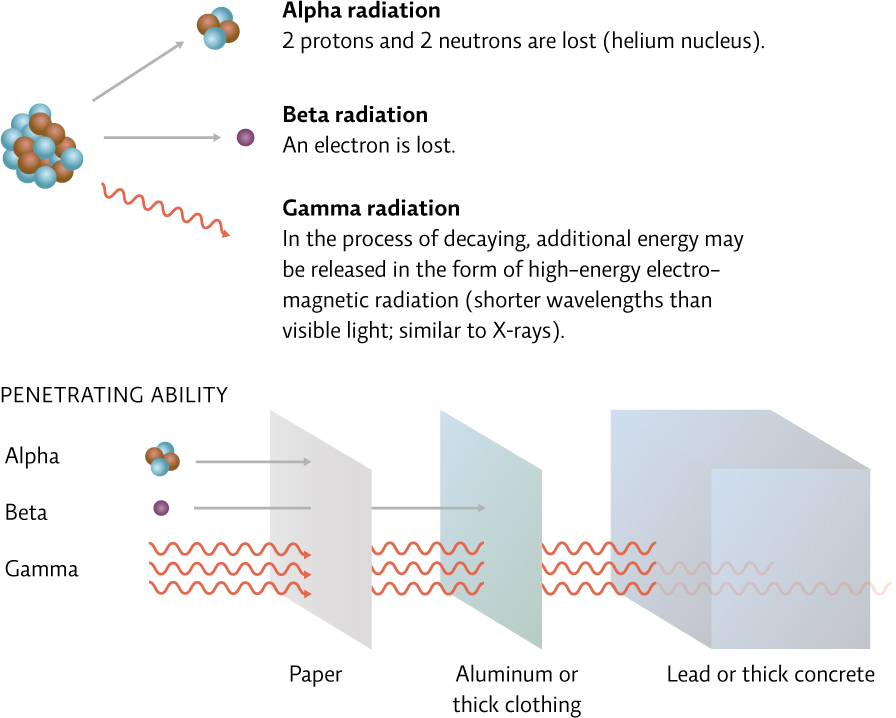23.4 Nuclear accidents can be devastating.
On the day of the quake, each of the three operating reactors at the Fukushima plant held about 25 000 fuel rods, each one about 4 metres long and filled with pellets of enriched uranium. The power outage had not only plunged the plant into darkness, but also stopped the normal delivery of water to those reactors.
As the world watched, workers at the plant tried everything they could think of to get cold water on the hot fuel. They tried to bring fire trucks and emergency power vehicles in, but the quake and tsunami had rendered the roads impassable. In one desperate attempt, some workers even searched the parking lot for vehicles that might have survived the tsunami with their batteries intact. But it was all to no avail.
Not only were the rods in danger of melting, and of producing hydrogen gas, but without a steady supply of coolant, they were rapidly boiling away all the existing water, thereby creating huge steam pressure in the reactor. To prevent an explosion, the steam would have to be released through a vent. But the design of the Fukushima reactors made this an especially tricky feat.

424
There are several different types of fission reactors. The most common type worldwide is a pressurized water reactor (PWR), where the steam that turns the turbine is not exposed to radiation: nuclear fission in the core heats water under pressure (like a pressure cooker); that water (which is exposed to radiation) is then piped through, and thus heats, a separate container of water (which is not exposed to radiation); it is the steam from this radiation-free water that turns the turbine. The reactors at Fukushima, however, were boiling water reactors (BWR); BWRs produce steam in the reactor core itself. This means that both the steam and the turbine become radioactive in the process. [infographic 23.5]

It also meant that opening the vent would be akin to pumping radiation straight into the air. Still, not opening it would almost certainly be worse: if any one of the reactors exploded, it would release much, much more radiation than the steam from the vent. “It was this horrible double-edged sword,” says von Hippel. “Exactly the kind of situation that we always feared with the BWRs—a lose-lose.”
On the morning of March 12th, six workers gathered in the plant’s main control room, where each of them swallowed several iodine pills; by loading their thyroid glands with iodine beforehand, they hoped to prevent their bodies from absorbing radioactive iodine from the steam that would pour out of the vent. They donned thick, heavy firefighter uniforms, along with oxygen tanks and masks, in an effort to shield themselves from alpha and beta radiation. Both alpha and beta radiation come from particles (alpha particles are basically a helium nucleus; beta particles are essentially electrons). Neither type can penetrate the skin very well. But if they enter the body through ingestion, both kinds can linger for years, causing organ damage and cancer.
425
None of the equipment would protect the workers from gamma radiation, which is much more energetic than alpha or beta particles and can easily penetrate walls, skin, and other surfaces. The only way for workers to avoid over-exposure to gamma rays would be to get in and out as quickly as possible. Dosiometers—mini radiation detectors attached to each fire suit—would let them know, with loud, alarmlike beeps, when they had exceeded the legal limits of exposure. [infographic 23.6]

As the sun climbed high over the ravaged coastline, the team of six headed into the first reactor to search in darkness for the vent. The plan was to work in teams of two, and to relay their efforts so that no one worker was left hovering over the vent for too long. It took the first team 11 minutes to find the manual gate valve, crank it open a quarter of the way, and retreat. With the vent open part-way, the radiation levels climbed so fast that the second team could not even reach it; in just 6 minutes, one of them absorbed a dose of radiation that surpassed the legal limit allowed for 5 years. The third team did not even try.
That afternoon, the building housing reactor No. 1 exploded, sending concrete and steel debris flying through the air and setting off a chaotic, and seemingly irreversible, chain reaction: radiation levels around the plant climbed exponentially, deterring efforts to vent the other two reactors. In the days that followed, both of them also exploded.